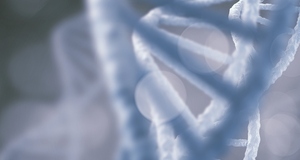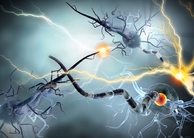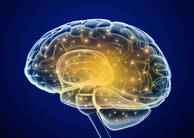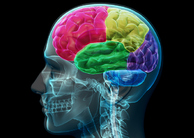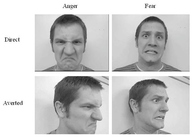Increases in the Prevalence of Autism Disorder: Exploring Biological and Socio-Environmental FactorsEnvironmental and Social Factors Influencing the Prevalence of Autistic DisorderIt is important to consider potential environmental factors such as social deprivation in children diagnosed with autism. Early studies have shown that institutionalized children display physiological and psychological effects such as delayed development, disorganized attachment, and poor peer relationships (Spitz, 1945). Research by Rutter et al. (2007) illustrates that children exposed to severe social deprivation displayed quasi-autistic features. The prevalence of autistic disorder can also be considered in the context of the changing definition of autism since 1952. Some researchers hypothesize that the increasing prevalence of autistic disorder is mostly a result of the broadening of the definition of autism. This suggests that the true prevalence of autism is constant, and as a result of changes in diagnostic criteria more children are being diagnosed as autistic. Further, children whose autistic traits were missed in the past are now more likely to be diagnosed due to the specifications in the diagnostic criteria for autism (King & Bearman, 2009). Another potential environmental factor is the increased awareness of autism through social influence. Conversations about shared concerns, health care providers, and social resources that were once considered taboo are now commonplace and occur on playgrounds and at social gatherings (Liu et al., 2010). Living in close proximity to a child with autism can result in increased awareness and information about autistic disorder (Liu et al., 2010).Social DeprivationA longitudinal study by Rutter et al. aimed to examine the extent of developmental deficit in children after adoption. The sample included 114 Romanian orphans exposed to extreme forms of social deprivation prior to adoption in the U.K before the age of two years. Participants were compared with a cohort of 52 control participants of the same age from the U.K. who had been adopted before the age of 6 months. Participants were evaluated for autism at 4, 6, and 11 years using standardized autism diagnostic tools. The findings reported that 9.2% of children who had been severely deprived prior to adoption developed quasi-autistic features. Among the children institutionalized for 6 to 24 months, 12% developed cognitive impairment, and 36% of those institutionalized greater than 24 months. Follow up showed 25% of children had resolution of autistic symptoms by 11 years of age (Rutter et al., 2007). Researchers concluded that there was a direct correlation between length of institutionalization (social deprivation) and cognitive impairment. Thus, this study supports the influence of environmental factors in the prevalence of autistic disorder. Change in Diagnostic CriteriaKing & Bearman (2009) explored the association of increased prevalence rates with changing diagnostic criteria for autism. The aim of the study was to determine the number of individuals who displayed a change in diagnosis status after the change of criteria with the DSM-IV in 1994. Participants were enrolled with the California Department of Developmental Services (DDS) from 1992 to 2005 and diagnosed with autism using the DSM-IIIR. Of 7003 participants, 631 (9%) were given a diagnosis of mental retardation (MR) and after the change in criteria, a diagnosis of autism. Of these 631 participants, 95% were given the additional diagnosis (diagnostic accretion) of autism with MR; 5% had a shift in diagnosis (diagnostic substitution) from MR to autism. The results illustrate that 26.4% of the increased prevalence of autism in California from 1992 to 2005 was due to a change in the diagnostic criteria of the DSM (King & Bearman, 2009). Researchers concluded that 1 in 4 children diagnosed with autism in 2009 would not have been diagnosed in 1993 based on the diagnostic criteria at the time. Thus, this suggests that the increase in prevalence of autism is partially related to the change in diagnostic criteria. Information DiffusionLiu et al. conducted a longitudinal population based study in California with the aim to determine the effects of social influence on the prevalence of autism. The hypotheses tested potential environmental factors including information diffusion—the spread of information and increased awareness due to close proximity, the exposure to environmental toxins, and viruses. Data about individuals born in California with younger siblings and information about individuals diagnosed with autism were obtained from two federal databases; movement of families between communities was analyzed. Children between the ages of 2 and 6 from 2000 to 2005 were selected, with a final data set of 304,310 participants. Liu et al. found that information diffusion was associated with a 16% increase in prevalence of autism. Further, no correlation was found between exposure to environmental toxins or viruses and cases of autism. The findings suggest that children have a higher chance of being diagnosed with autism if they live within 250 meters of a child with autism (42%) and 250– 500m (22%) (Liu et al., 2010). The results of the study suggest that environmental factors such as information diffusion influence the prevalence of autistic disorder. Biological Factors Influencing the Prevalence of Autistic DisorderIn recent years, studies have pointed to a biological etiology of autism and there is developing evidence that genetic inheritance underpin autistic spectrum disorders (Walsh & Hurley, 2013). Twin studies provide a way to test the validity of genetic influence; the rate at which identical (monozygotic twins) and fraternal (dizygotic twins) develop the same disorder can be observed. This is because monozygotic twins (MZ) have identical DNA, whereas the DNA of dizygotic twins (DZ) differs (Lathe, 2006). Further, Familial aggregation is the occurrence of a given trait shared by members of a family that cannot be readily accounted for by chance (Folstein & Rutter, 1988). The hypothesis of familial inheritance is that people pass down faulty genes to their offspring. This is supported by the statistic that siblings have a 20 to 50 times higher risk of developing autism compared to the general population (Happé & Frith, 1996). Another emerging area in the biological study of autistic disorder has been research on regions called “copy-number variants” (CNVs) which are large groups of genes with apparent duplications or deletions (Walsh and Hurley, 2013). DNA scans and genetic mapping provide a viable method of research to study individuals with and without autism in order to pinpoint specific genes or chromosomes affected. Detection of specific CNVs can help scientists target genes and develop screening tests for early diagnosis and treatment. Twin studiesRosenberg et al. conducted a twin study in the U.S. population examining patterns of ASD inheritance. This was a cross-sectional (conducted at a single point in time) study of U.S. residents using an autism registry. The aim of the study was to measure the concordance rate (the rate at which twins developed the identical disorder) of autism. The Interactive Autism Network was established to assist with recruiting participants with autism; it is currently the largest research cohort of twins with at least one member of a family affected by ASD. Participants in the study included individuals with autistic disorder, Asperger’s syndrome and PDD-NOS; individuals with Rett syndrome and childhood disintegrative disorder were excluded. Screening questionnaires were obtained from 277 twin pairs (210 DZ and 67 MZ) under 18 years of age with at least 1 affected twin. Rosenberg et al. (2009) found that pair wise ASD concordance was 88% for MZ and 31% for DZ twins. The results of this study illustrate a higher ASD concordance in identical twins than in fraternal twins, suggesting that the prevalence of autism is influenced by the biological factor of genetic inheritance. Familial InheritanceIn a more recent study, Sandin et al. aimed to determine the familial risk and heritability of autism. The methodology was a longitudinal population-based cohort study of 2,049,973 Swedish children born between 1982 and 2006. Swedish national health registers were used to obtain anonymous data to determine the prevalence of autistic disorder. The study also considered environmental factors; these were split into two categories: shared environments between family members (location of housing, or diet), and non-shared environments unique to the participant (birth complications or maternal infections). The proportion of risk that is attributed to genetic factors (heritability) was assessed. Further, familial aggregation was measured by comparing the risk of autism in children with siblings diagnosed with and without autism. As a baseline, the prevalence of ASD was 1.2% in children without an affected relative. Children with an affected sibling were ten times more likely to also have the diagnosis. Similarly, children with a half-sibling or cousin with autism were also at a higher risk (Sandin et al., 2014). Sandin et al. concluded that the 54% of risk for autism is associated with genetic factors, and non-shared environmental factors account for 46% of risk for autistic disorder. This suggests that the prevalence of autism is influenced by both biological and environmental factors. Gene MappingWang et al. performed DNA screenings on a cohort of 780 families (3101 participants) diagnosed with ASD, and then compared a cohort of 1204 participants with ASD to 6491 controls of European ancestry. The aim of the study was to identify common genetic abnormalities in participants with ASD in order to isolate specific genes linked to the spectrum of disorders. Two databases (the Autism Genetic Research Exchange and the Autism Case Control cohort) were used for the initial genome-wide association study. Wang et al. (2009) found six genetic variants present in over 65% cases of autism that lay between two genes calledCadherin (CDH) 9and CDH 10 in the chromosome 5p14.1 region. These genes encode for adhesion molecules, allowing neurons to connect and communicate with one another (Wang et al., 2009). The results establish that CNVs on chromosome 5p and a lack of neuronal cell-adhesion molecules may be biological factors involved in the prevalence of autistic disorder.Continued on Next Page » Suggested Reading from Inquiries Journal
Inquiries Journal provides undergraduate and graduate students around the world a platform for the wide dissemination of academic work over a range of core disciplines. Representing the work of students from hundreds of institutions around the globe, Inquiries Journal's large database of academic articles is completely free. Learn more | Blog | Submit Latest in Neuroscience |











